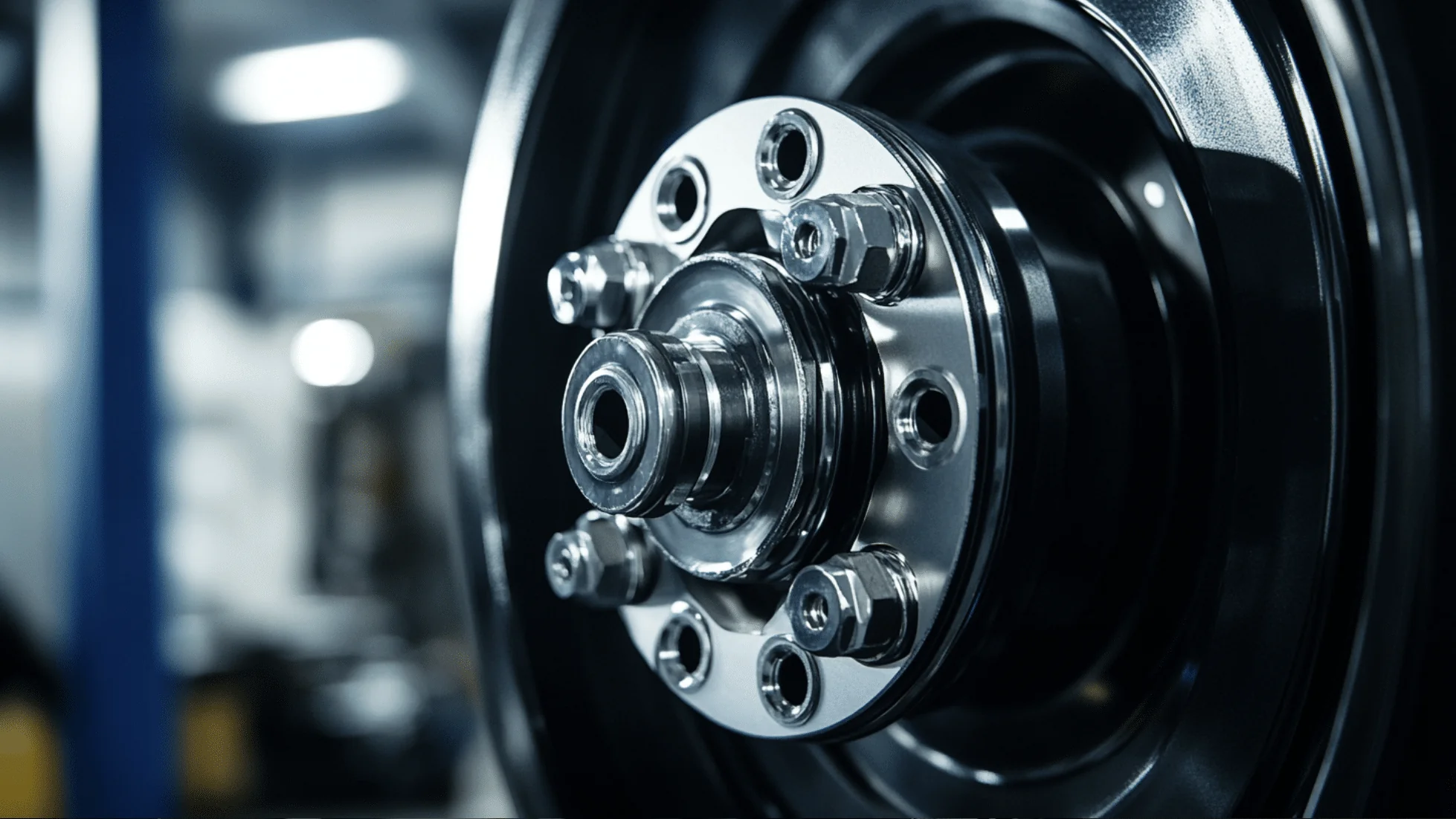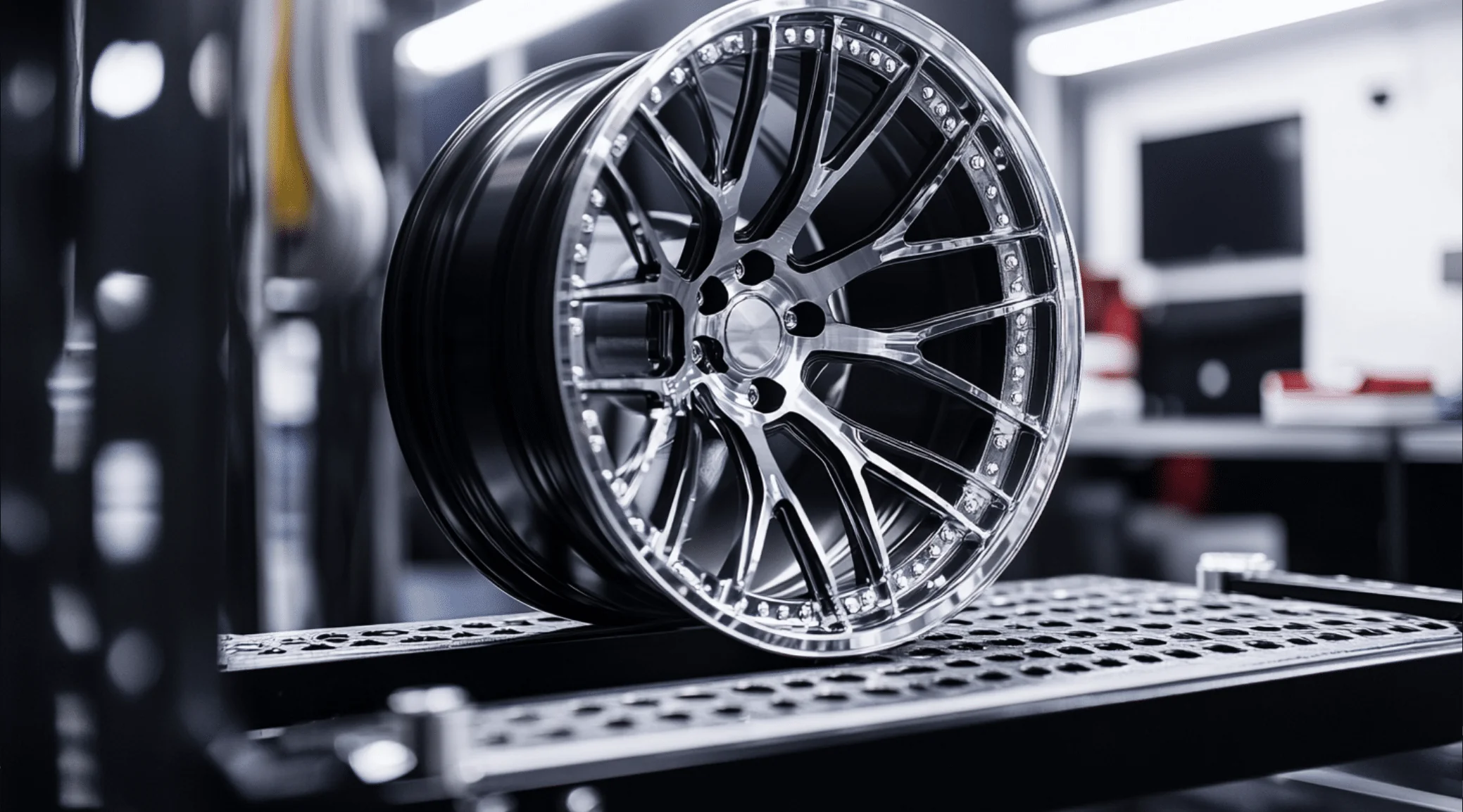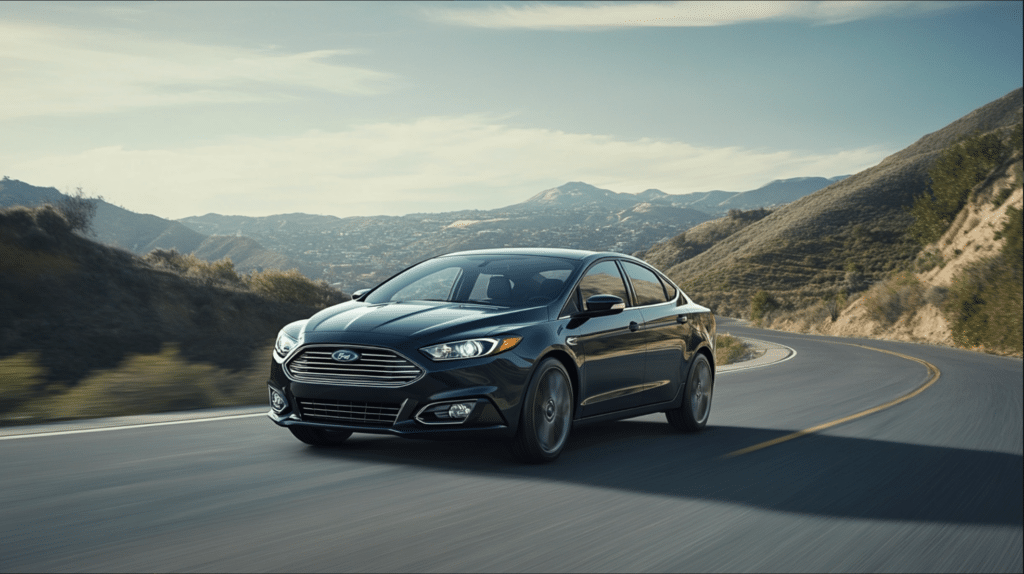Car enthusiasts and Ford Fusion owners often face confusion when it comes to wheel upgrades or replacements.
The bolt pattern, a key factor in wheel compatibility, has changed over the years, making it tricky to find the right fit. But don’t worry – we’ve got you covered.
In this guide, I will walk you through the Ford Fusion bolt pattern evolution from 2013 to 2020, making your wheel-related decisions a breeze.
I’ll explore how Ford standardized the bolt pattern across all Fusion models during this period, simplifying things for owners and mechanics alike.
By the end of this article, you’ll have a clear understanding of the Fusion’s bolt pattern, its consistency over the years, and how this knowledge can help you make informed choices for your vehicle’s wheels.
The Consistent Bolt Pattern: 2013-2020

Ford Fusion models from 2013 to 2020 all share the same 5×108 mm bolt pattern.
This consistency simplifies wheel selection and replacement for owners, offering a wide range of compatible options across these model years.
From 2013 to 2020, all Ford Fusion models shared the same bolt pattern: 5×108 mm or 5×4.25 inches.
This means that regardless of the year or trim level, Fusion owners could count on a consistent wheel fitment.
This uniformity made wheel replacements and upgrades much easier, as owners didn’t need to worry about year-specific patterns.
Understanding the 5×108 mm Pattern

The 5×108 mm pattern indicates that there are 5 lug nuts forming a circle with a diameter of 108 mm (or 4.25 inches).
This measurement is key for determining wheel compatibility.
When shopping for new wheels or tires, knowing this pattern ensures you’ll find the right fit for your Fusion, regardless of whether it’s a 2013 or a 2020 model.
Benefits of Consistency in Bolt Patterns
This consistency offers several advantages:
- Simplified maintenance: Mechanics can easily work on any Fusion from this period without checking for model-specific patterns.
- Wider aftermarket options: A uniform bolt pattern means more wheel choices are available for customization.
- Reduced errors: The standardized pattern minimizes the risk of fitting incompatible wheels.
Comparison with Earlier Models
| Aspect | Before 2013 | 2013-2020 |
|---|---|---|
| Bolt Pattern Variety | Varying bolt patterns (4×108 mm or 5×114.3 mm) | Standardized bolt pattern (5×108 mm) |
| Confusion in Upgrades | High, due to different patterns across models | Minimal, due to uniformity across all models |
| Ease of Wheel Replacement | Difficult, as owners needed to check model-specific patterns | Simplified, with consistent fitment across all years |
| Ford’s Objective | N/A | Simplification for owners and mechanics |
| Impact on Mechanics | Complex, as different models required different patterns | Easier, with uniform pattern simplifying tasks |
Technical Breakdown of the 2013-2020 Ford Fusion Bolt Patterns
The 5×108 mm bolt pattern, consistent across all trim levels and engine types, includes a center bore of 63.4 mm and a thread size of M12 x 1.5.
These specifications are crucial for proper wheel fitment and safety.
Rim and Tire Specifications
The consistency in the 5×108 mm (5×4.25 inches) bolt pattern across all Ford Fusion models from 2013 to 2020 allows for a wide range of compatible wheel options:
1. Rim Sizes
- 16-inch: Common on base models
- 17-inch: Standard on mid-range trims
- 18-inch: Often found on higher-end trims
2. Tire Specifications
- 215/60R16: Typical for 16-inch wheels
- 235/50R17: Common for 17-inch wheels
- 235/45R18: Standard for 18-inch wheels
Key Technical Specifications
To ensure proper wheel fitment and safety:
Torque Specification: 100 lb-ft (135 Nm)
Center Bore: 63.4 mm
Thread Size: M12 x 1.5
Model-Specific Details
While the bolt pattern remained uniform, there were some variations based on model and engine type:
1. Standard Models (2013-2016)
- 1.5L – 1.6L I4 (Petrol): 215/60R16 on 6.5Jx16 ET50 rims
- 2.0L I4 (Hybrid): 225/50R17 on 7.5Jx17 ET55 rims
- 2.0L I4 (Petrol): 235/50R17 on 8Jx18 ET55 rims
- 2.5L I4 (Petrol): 215/60R16 or 235/50R17 options
2. Facelift Models (2017-2020)
- 1.5 Ecoboost: 215/60R16 on 6.5Jx16 ET50 rims
- 2.0 Ecoboost: 235/50R17 on 7.5Jx17 ET55 rims
- 2.0 HEV I4 and 2.0 PHEV I4: 225/50R17 on 7.5Jx17 ET55 rims
- 2.7 Ecoboost V6: 235/50R17 on 7.5Jx17 ET55 rims
Despite these variations in rim sizes and tire specifications, the consistent 5×108 mm bolt pattern ensured that wheels could be interchanged between different Fusion models and years within this range.
This uniformity was a big plus for owners, offering flexibility in wheel choices while maintaining proper fitment across the board.
Practical Implications for Ford Fusion Owners
The uniform bolt pattern allows for easy wheel upgrades and customization options.
Owners can choose from a variety of aftermarket wheels, and even use compatible wheels from other vehicle models, expanding their choices for style and performance enhancements.
The consistent 5×108 mm bolt pattern across 2013-2020 Ford Fusion models offers several advantages for owners:
1. Simplified Wheel Upgrades
- Owners can easily swap wheels between different Fusion model years.
- Thanks to the common bolt pattern, a wide range of aftermarket options is available.
2. Cost Efficiency
- No need for custom adapters or specialized wheels.
- Owners can take advantage of deals on standard 5×108 mm wheels, potentially saving money.
Maintaining Optimal Performance While Customizing
When upgrading wheels, consider these factors:
1. Balancing Aesthetics and Performance
- Choose wheels that fit the bolt pattern and align with your Fusion’s specifications (tire size, offset, load rating).
- Larger wheels may look great but could affect ride quality and handling.
2. Proper Installation
- Always follow the recommended torque specification of 100 lb-ft when installing wheels.
- Use the correct lug nuts and ensure they’re properly fastened for safety.
3. Fuel Efficiency
- Be aware that heavier or larger wheels can impact fuel economy.
- Weigh this against the desired look and performance.
When customizing, keep these points in mind:
- Stay within the recommended offset range (ET48-52) to avoid rubbing issues.
- Consider load ratings, especially if upgrading to larger wheels or tires.
- Maintain the correct center bore (63.4 mm) or use hub-centric rings for a proper fit.
Conclusion
Understanding your Ford Fusion’s bolt pattern is key to maintaining and upgrading your vehicle with ease.
From 2013 to 2020, Ford simplified things by using a consistent 5×108 mm pattern across all Fusion models.
This uniformity opens up a world of possibilities for wheel customization and replacement, making your life as a Fusion owner much simpler.
It doesn’t matter if you’re looking to enhance your car’s performance, change its look, or simply replace worn-out wheels; knowing this information empowers you to make informed decisions.
Remember, while the bolt pattern offers flexibility, always consider other factors like offset and load ratings to ensure optimal performance and safety.
Frequently Asked Questions
What Wheels Fit a Ford Fusion?
Wheels with a 5×108 mm bolt pattern fit Ford Fusions from 2013 to 2020. Rim sizes range from 16 to 19 inches, depending on the model and trim level.
What Cars Have a 5×108 Bolt Pattern?
Many Ford models (Focus, Escape, Edge), Volvos (S60, XC60, V70), and some Land Rovers (Freelander 2, Range Rover Evoque) use the 5×108 bolt pattern.
Can I Use Wheels from Other Ford Models on My Ford Fusion?
Yes, you can use wheels from other Ford models on your Fusion if they have a 5×108 bolt pattern. However, always check the wheel’s offset, center bore, and load rating to ensure proper fit and safety.


